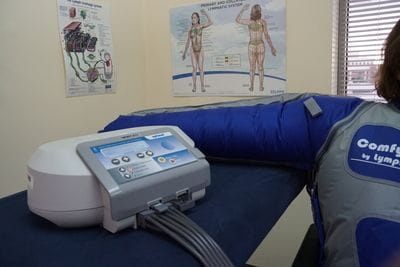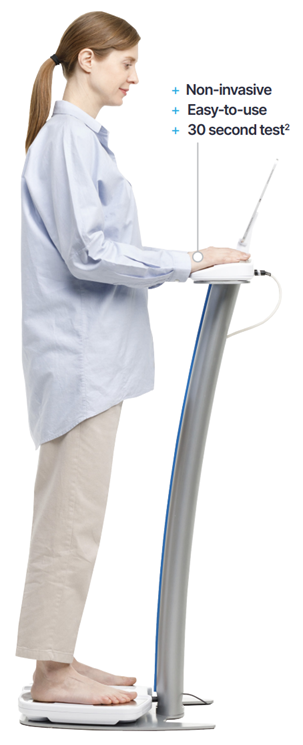Who is at risk of Lymphoedema?
- People who have had surgery and/or removal of lymph nodes
- Those who have had radiotherapy
- People who have had a trauma or injury to the lymphatic system
- People with chronic cellulitis
Signs and Symptoms
- Swelling of any part of the body
- Heaviness, tightness or fullness of a limb
- Aching or pain in the swollen area
- Clothing, shoes or jewellery may feel tighter
Management
Our lymphoedema therapists are trained to provide Complete Decongestive Therapy (CDT) to patients affected by lymphoedema.
This may include:
- Assessment and education
- Manual lymphatic drainage massage
- Kinesio taping
- Compression bandaging
- Prescription of exercises
- Prescription of compression garments
Treatment may also include the use of low level laser therapy or pneumatic compression pump therapy
SOZO for Lymphoedema Prevention
Our Kogarah lymphoedema clinic regularly uses the SOZO machine as part of our lymphoedema assessments.
The SOZO machine uses bioimpedance spectroscopy (BIS) to measure and deliver a precise snapshot of fluid status and tissue composition as well as the L-DEX score to aid in the assessment of secondary, cancer-related lymphoedema.
This quick 30 second, non-invasive test will enhance our proactive patient care including early detection of disease progression, treatment monitoring and patient education.
The SOZO can be used for lymphoedema detection and monitoring. Changes in fluid status can be detected using this measure even before the naked eye or through tape measurement and often prior to symptoms even appearing.
Position papers written by the Australasian Lymphology Association recommend that cancer patients who have undergone treatment e.g. surgery, chemotherapy, radiotherapy should have their bioimpedance measures taken pre-treatment and then every 3 months for at least the first two years post treatment.
In a recently published randomised control trial (PREVENT Trial1), results showed that the SOZO:
- Is more precise and reliable than tape measure (the current most used objective measure) at detecting lymphoedema
- Significantly lowers progression to chronic lymphoedema - 92% of patients who had lymphoedema detected early using SOZO, were treated and did not progress to chronic lymphoedema
- Should be part of standard practice in prospective breast cancer-related lymphoedema surveillance.
References
1. Ridner SH et al. A Comparison of Bioimpedance Spectroscopy or Tape Measure Triggered Compression Intervention in Chronic Breast Cancer Lymphedema Prevention. Lymphatic Research and Biology 2022
Other conditions related to lymphoedema
- Axillary Cording
- Muscle weakness
- Restricted range of movement
- Scar tightness

)
)
)
)
)
)
)
)
)
)
)
)



)